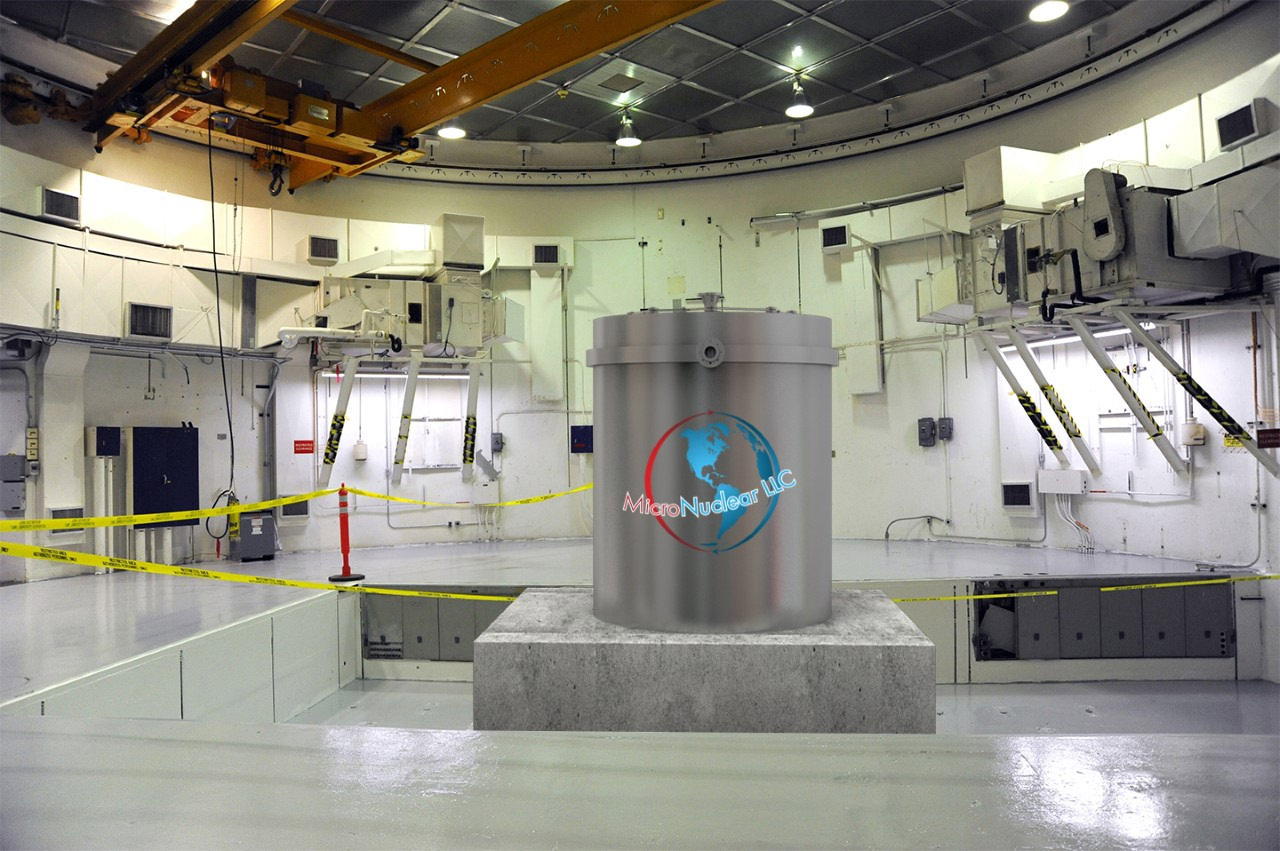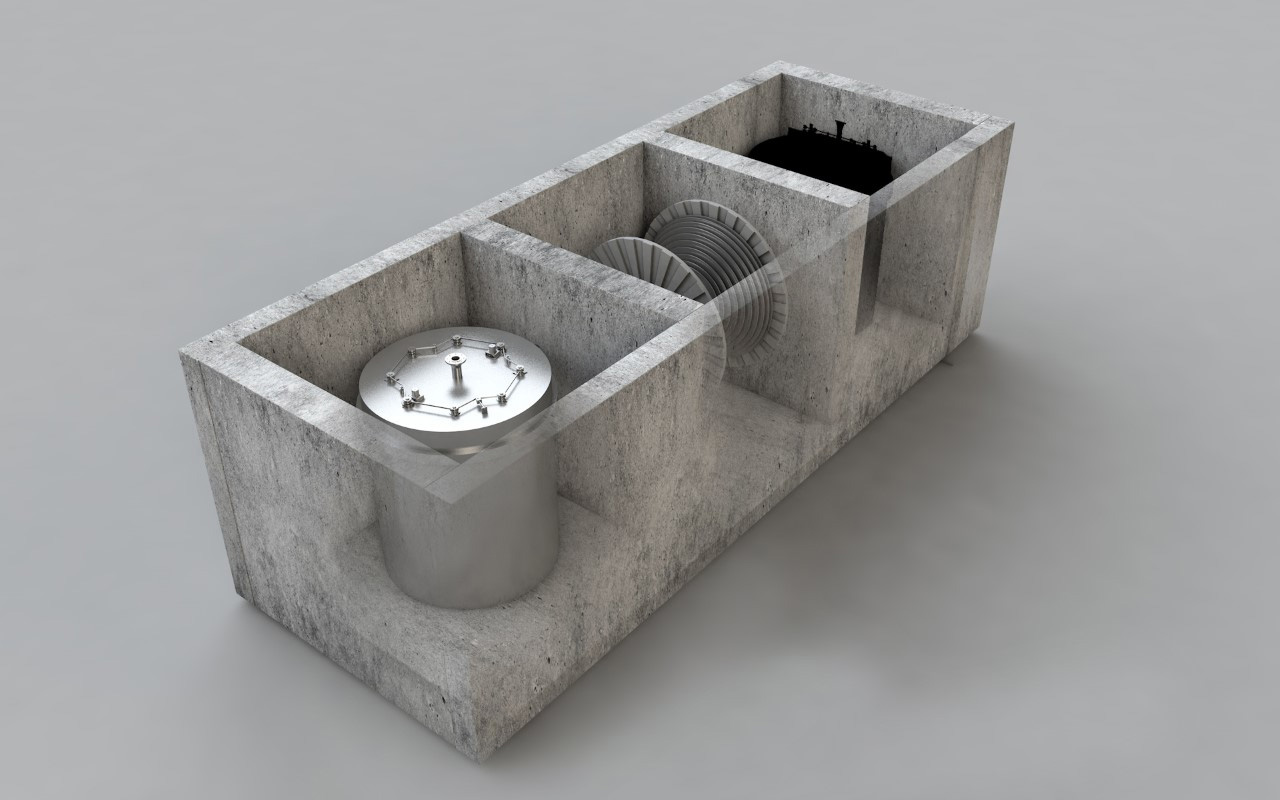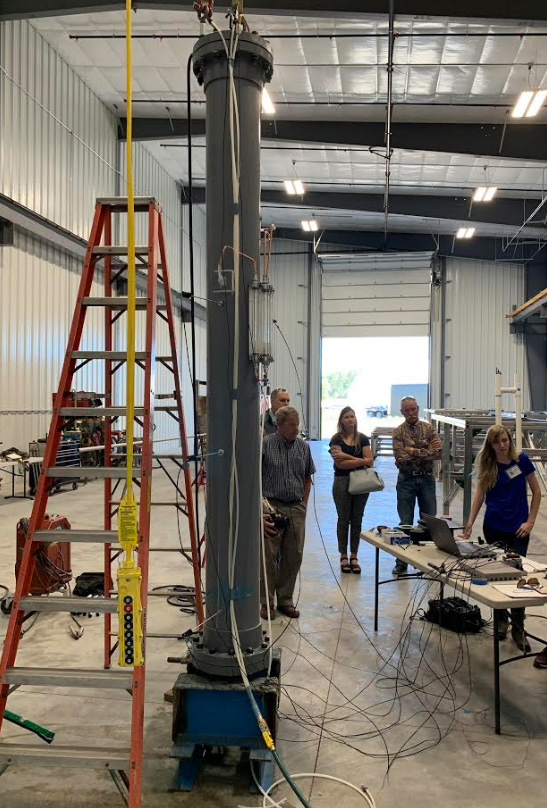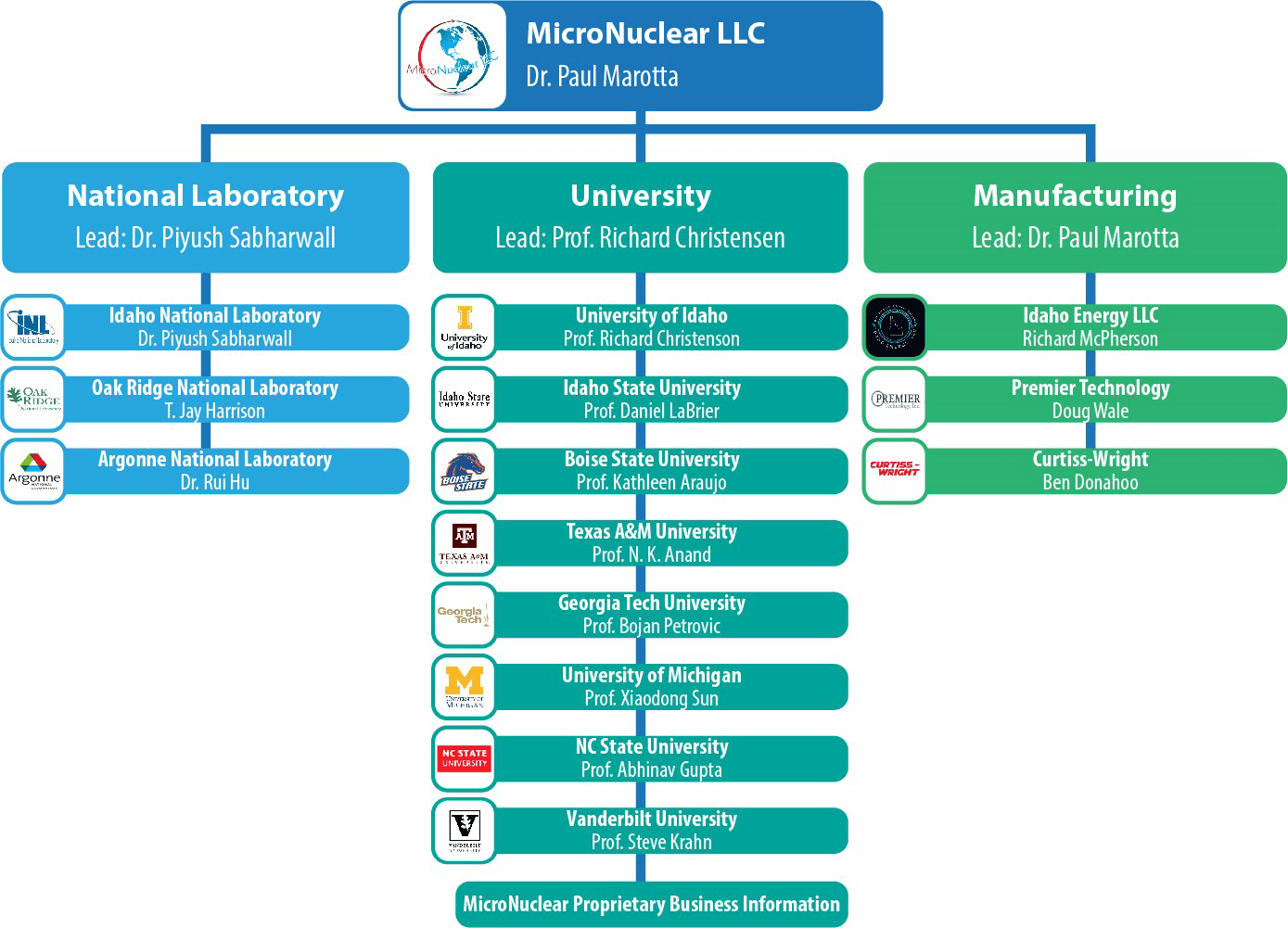Nuclear Reactor Testing Device Opens Doors to Safer Energy
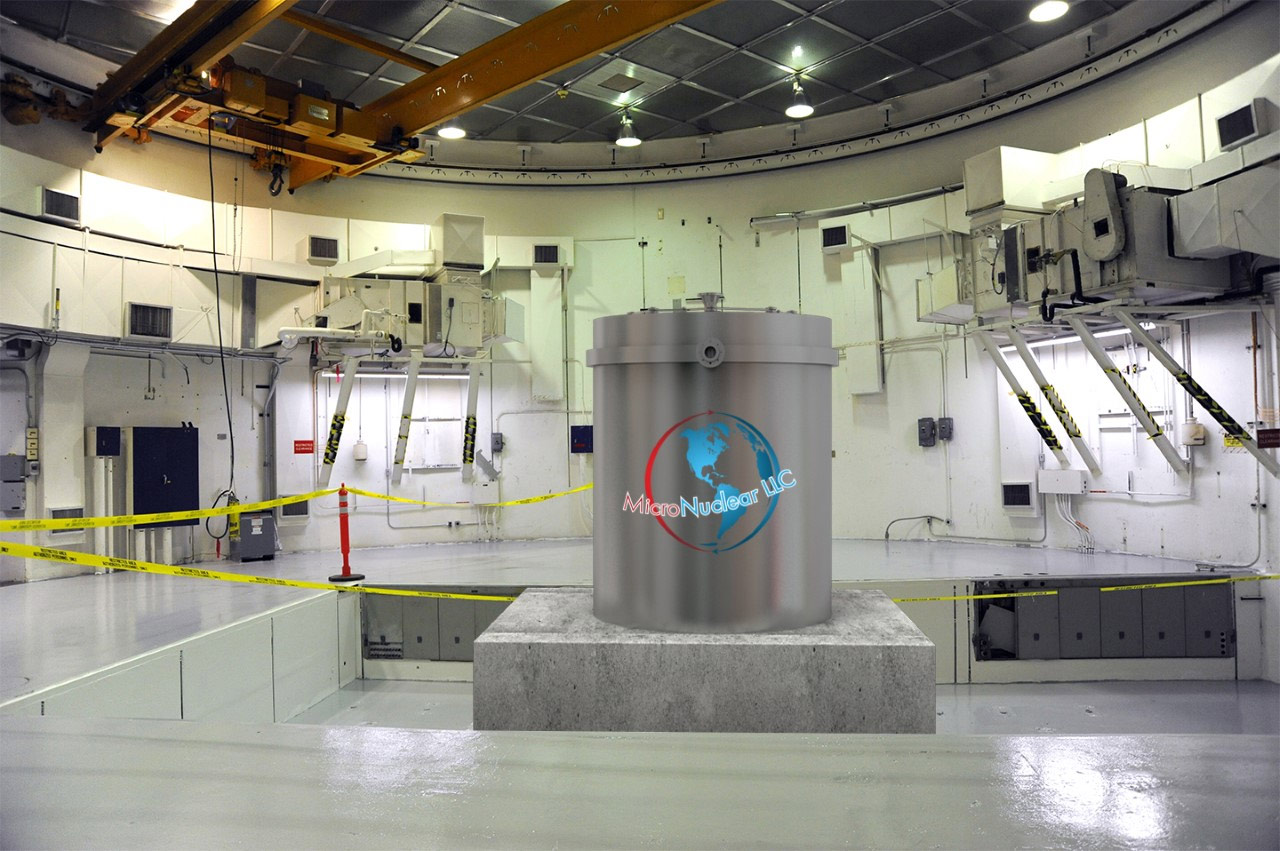
New process to save communities millions of dollars and speed up development of the world’s first Molten Salt Nuclear Battery
“This is a monumental step in the molten salt reactor design process. So many military bases, hospitals and communities rely on secure, continuous energy from a standard grid. If that grid goes down, all these critical areas suffer. The MsNB provides a small, distributed energy source, bringing autonomy to institutions who were once dependent on one central source of power.” Rich Christensen, U of I Idaho Falls Nuclear Engineering Director
University of Idaho, Idaho Falls researchers have verified a new process to save communities millions of dollars and speed up development of the world’s first Molten Salt Nuclear Battery (MsNB), a nuclear energy reactor to generate heat and produce electricity.
Generating energy from nuclear fuel dissolved in molten salt is known for its improved safety and efficiency, as the process does not require a solid fuel like the uranium or plutonium used in most nuclear reactors today. Research is ongoing to bring this technology to market.
“This is a monumental step in the molten salt reactor design process,” said U of I Idaho Falls Nuclear Engineering Director Rich Christensen, “So many military bases, hospitals and communities rely on secure, continuous energy from a standard grid. If that grid goes down, all these critical areas suffer. The MsNB provides a small, distributed energy source, bringing autonomy to institutions who were once dependent on one central source of power.”
Molten salt reactor technology first gained popularity in the 60s. Salt doesn’t burn, it’s not combustible and has a low volatility, removing risk of vessel rupture from pressure build-up as seen in other nuclear reactors.
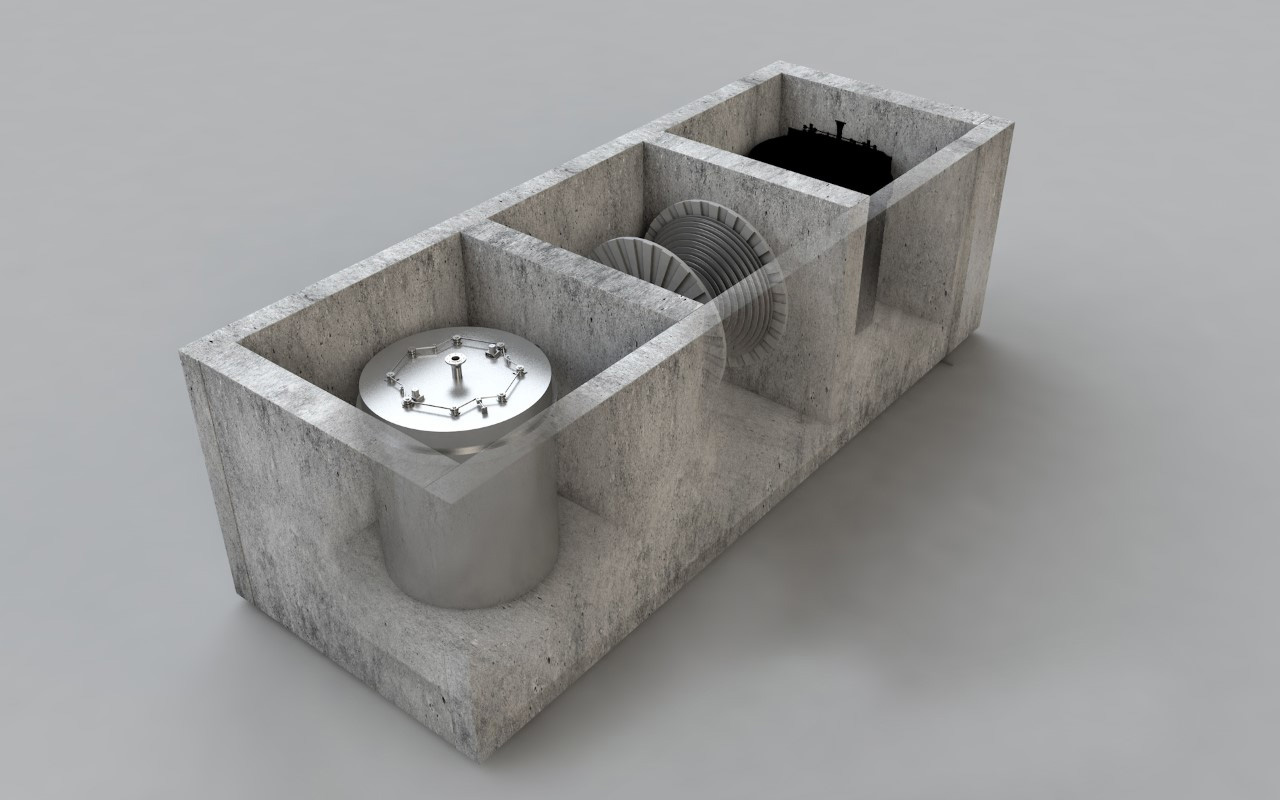
A new testing device physically validates the MsNB as an improved, more reliable and cost-effective molten salt reactor for its ability to naturally circulate liquid fuel.
Conceived by Tennessee-based nuclear power company Micro Nuclear, LLC., Chief Executive Officer Paul Marotta, Idaho National Laboratory (INL) Research Scientist Piyush Sabharwall and U of I Professor Christensen, the device will save millions in testing costs and cut up to two years off the MsNB’s development timeline.
Designed by Christensen, the testing device uses ohmic heating to evenly heat liquid via an electric current. It acts as a reactor surrogate, mimicking the internal heat generation that would occur within a reactor through fission, or the splitting of an atom’s nucleus.
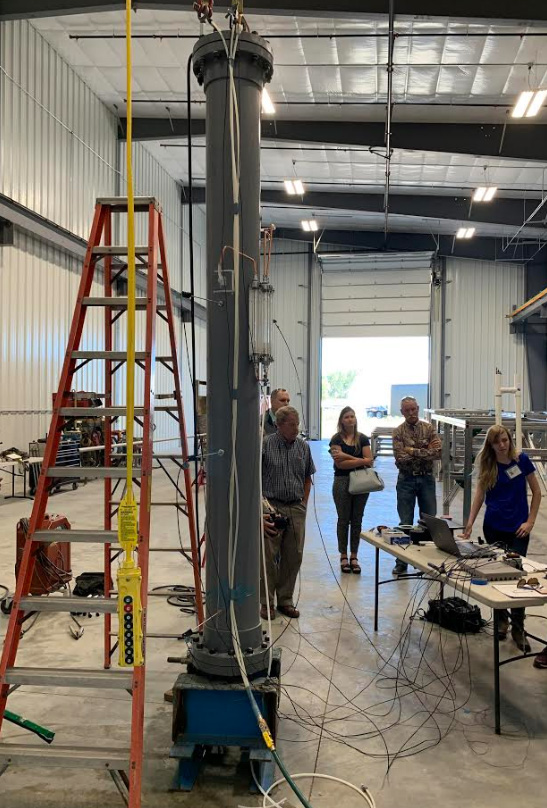
In the MsNB, heat released during the ohmic heating testing process causes the molten salt fuel within the battery to rise in a central cylinder. Once at the top, the fuel moves to a heat exchanger, where it is cooled and falls back down the space between inner and outer cylinders. This natural circulation eliminates the need for valves and pumps, improving the reliability and simplicity of the reactor design.
The ohmically heated reactor surrogate, constructed by Blackfoot, Idaho, contractor Premier Technology, Inc., also allows researchers like Christensen and U of I students to easily physically validate computer simulations, reducing overall testing cost. A patent is being filed on the concept’s application to natural circulation in nuclear power plants.
With a 10-year lifespan, the MsNB would allow for easy factory construction and transport of reactors to remote areas to support critical infrastructure with electricity and heat. When the battery dies, Christensen said, the device can be shipped back to the factory to be recycled or disposed of.
A U.S. Department of Energy grant proposal has been submitted by Micro Nuclear, Premier Technology, INL and a consortium of eight universities led by U of I. If awarded, funding will go toward validation and completion of an initial MsNB design, including manufacturing at Premier Technology.
“This is a collaborative effort to develop advanced nuclear technology that can support critical health and security infrastructure,” said Ashley Finan, National Reactor Innovation Center (NRIC) director, “NRIC is ready to partner with the team to make this demonstration a success.”
Partners
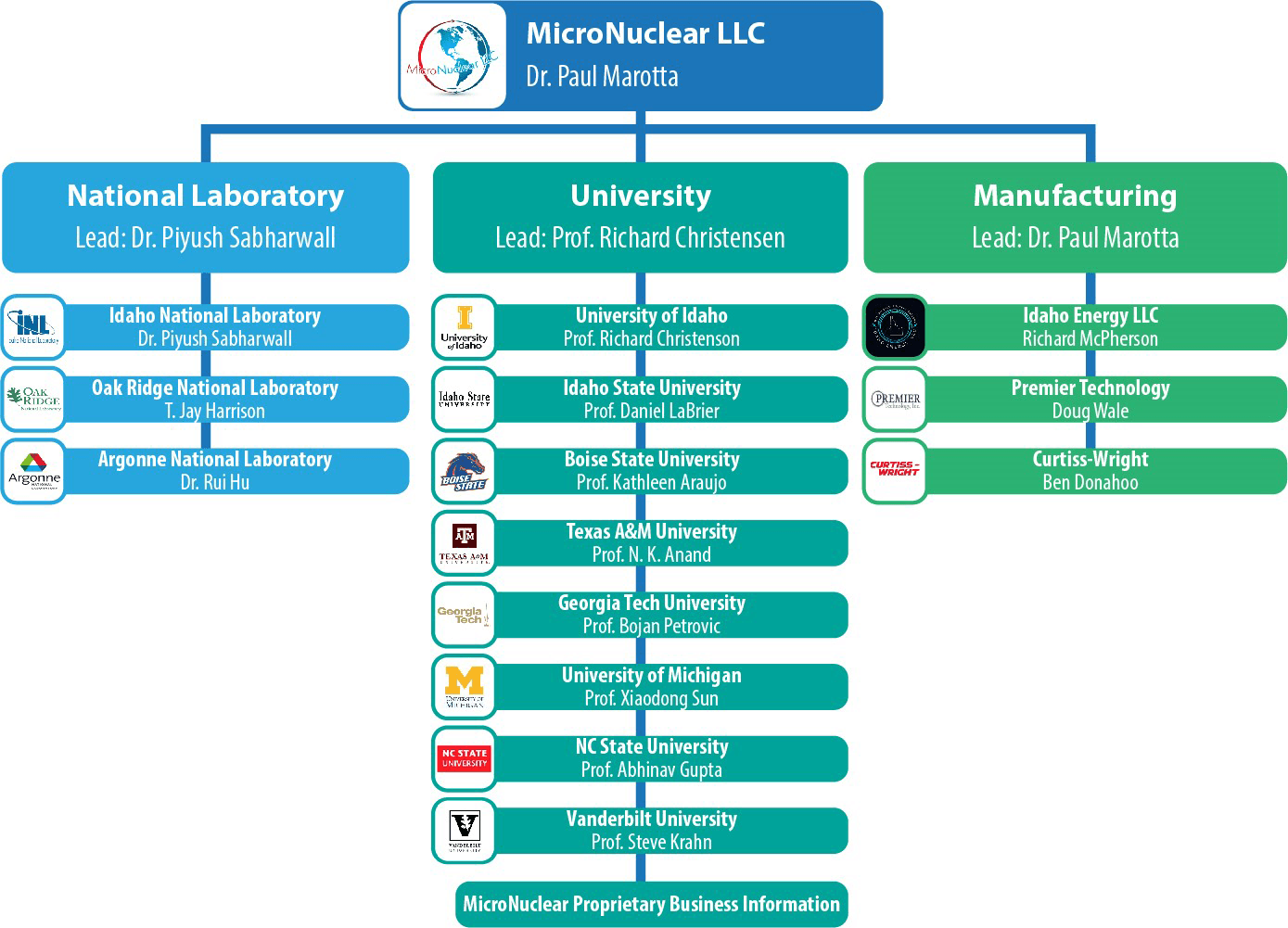
MicroNuclear LLC - Dr. Paul Marotta
- National Laboratory - Lead: Dr. Piyush Sabharwall
- Idaho National Laboratory - Dr. Piyush Sabharwall
- Oak Ridge National Laboratory - T. Jay Harrison
- Argonne National Laboratory - Dr. Rui Hu
- University - Lead: Prof. Richard Christensen
- University of Idaho - Prof. Richard Christensen
- Idaho State University - Prof. Daniel LaBrier
- Boise State University - Prof. Kathleen Araujo
- Texas A&M University - Prof. N. K. Anand
- Georgia Tech University - Prof. Bojan Petrovic
- University of Michigan - Prof. Xiaodong Sun
- NC State University - Prof. Abhinav Gupta
- Vanderbilt University - Prof. Steve Krahn
- MicroNuclear Proprietary Business Information
- Manufacturing - Lead: Dr. Paul Marotta
- Idaho Energy LLC - Richard McPherson
- Premier Technology - Doug Wale
- Curtiss-Wright - Ben Donahoo
Photos Available: To request files, email Alexiss Turner at alexisst@uidaho.edu.
Article by Alexiss Turner
Published Nov. 2020







